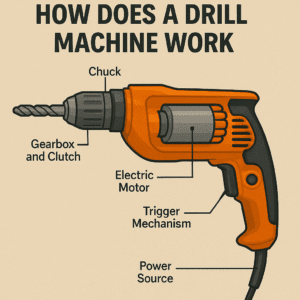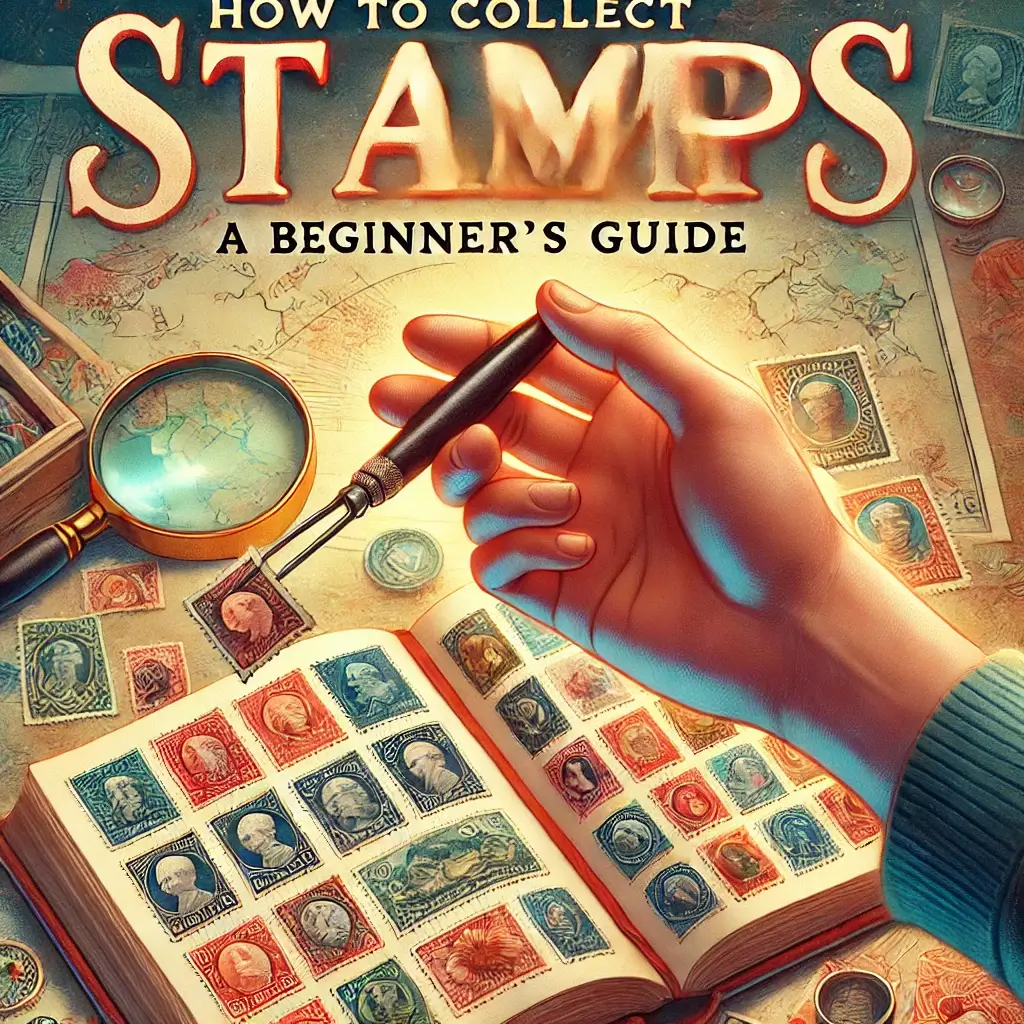Understanding the Mechanism: How Does a Drill Machine Operate?
You pick it up, point it, and pull the trigger. In an instant, a symphony of gears and electronics converts a simple electrical current into the powerful, precise rotational force that can sink a screw or bore a hole through solid wood. We use them every day, but have you ever stopped to wonder what’s actually happening inside that rugged plastic housing? How does a drill work?
It’s not magic, but it is a marvel of modern engineering. The journey from your wall outlet or a battery pack to the tip of a spinning drill bit is a fascinating process involving magnets, gears, and clever mechanical systems. Understanding this process doesn’t just satisfy curiosity; it makes you a smarter drill user, helping you choose the right tool for the job and appreciate the technology you hold in your hands.
In this guide, we’re going to pop the hood. We’ll take a tour of the drill’s inner world, breaking down each key component—from the motor to the chuck—into simple, easy-to-understand terms. Let’s begin.
The Spark of Life: The Power Source
Before any work can be done, the drill needs energy. This energy comes in one of two forms, defining the two major categories of drills.
Corded Drills: The AC Powerhouse
A corded drill is a direct link to the power grid. When you plug it in, it taps into the Alternating Current (AC) electricity from your wall outlet. This current flows through the power cord, to the variable speed trigger, and then to the motor. The great advantage here is consistency; the drill receives a steady, powerful stream of energy, allowing it to run at peak performance indefinitely, without ever fading.
Cordless Drills: The DC Liberator
Cordless drills carry their power plant with them in the form of a rechargeable battery pack. These batteries provide Direct Current (DC) electricity. Modern drills almost exclusively use Lithium-Ion (Li-ion) batteries, which are lightweight, powerful, and hold a charge for a long time. The battery’s Voltage (V) rating is a measure of its overall power potential, while its Amp-hour (Ah) rating is like the size of its fuel tank, indicating how long it can run.
The choice between these two power sources is the first and most critical decision a buyer makes. It’s a fundamental trade-off between the raw, unending power of a corded drill and the go-anywhere convenience of a cordless model. Our detailed guide on which is better: corded or cordless drill can help you decide which is right for your needs.
The Heart of the Machine: The Electric Motor
The motor is the hero of the story. Its sole job is to convert electrical energy into rotational motion. This happens through the fundamental principle of electromagnetism: when an electric current flows through a wire, it creates a magnetic field. By cleverly arranging magnets and coils of wire, a motor can generate continuous rotation. There are two main types of motors used in drills.
The Classic Design: Brushed DC Motors
For decades, this was the standard. A brushed motor has four key parts:
- Stator: A pair of stationary magnets on the outside of the motor housing, creating a permanent magnetic field.
- Rotor (or Armature): A series of wire coil electromagnets that sits inside the stator and is free to spin.
- Commutator: A ring attached to the rotor that acts as a switching mechanism.
- Brushes: Two small blocks of carbon that are spring-loaded to maintain physical contact with the spinning commutator, delivering electricity to the rotor’s coils.
How it works: Electricity flows through the brushes to the commutator, energizing the rotor coils and turning them into electromagnets. These are instantly repelled by the stator magnets, forcing the rotor to spin. As it spins, the commutator rotates to the next contact point, reversing the polarity of the coils so they are constantly being “pushed” away by the stator. This happens thousands of times a minute, creating powerful rotation. The main drawback is that the brushes physically rub against the commutator, creating friction, heat, and wear over time.
The Modern Powerhouse: Brushless DC Motors
Brushless motors are the pinnacle of modern drill technology. They are more efficient, more powerful, and last longer. They work by flipping the traditional design on its head:
- The powerful magnets are on the rotor (the spinning part).
- The wire coils are on the stator (the stationary part).
- There are no brushes and no commutator. Instead, a small computer, an electronic controller, manages the flow of electricity.
How it works: The electronic controller acts as a “smart” switch. It precisely senses the position of the rotor and energizes the correct stator coil at the exact right time. This creates a rotating magnetic field that “pulls” the rotor magnets along. Because there’s no physical contact, there’s no friction, less heat, and no parts to wear out. All the energy goes directly into creating motion, resulting in more power and longer battery life.

Technology in Action: DEWALT 20V MAX XR Brushless Drill
This iconic drill is a prime example of brushless motor technology. The “XR” stands for “eXtreme Runtime,” a direct benefit of the motor’s efficiency. It delivers more power in a more compact size compared to older brushed models. When you invest in a brushless tool, you’re investing in a smarter, more durable, and higher-performing piece of equipment.
Key Benefit: More power, longer runtime, longer tool life
Ideal For: Serious DIYers and professionals who demand performance.
From Raw Speed to Usable Force: The Gearbox
A drill motor spins incredibly fast—often over 20,000 RPM. This is far too fast for drilling a hole and has very little twisting force (torque). To be useful, this speed must be converted into torque. That’s the job of the gearbox, or transmission.
Think of it like the gears on a bicycle. In a low gear, you can pedal up a steep hill easily (high torque), but you don’t go very fast. In a high gear, you can go very fast on a flat road (high speed), but you can’t climb a hill. A drill’s gearbox uses a planetary gear system to do the same thing. This compact system of gears reduces the motor’s high speed and, in doing so, multiplies its torque. The 1-2 switch on top of your drill is a gear shifter, allowing you to select either low speed/high torque (for driving screws) or high speed/low torque (for drilling holes).
Controlling the Power: The Clutch
Have you ever noticed the numbered collar right behind the chuck? That’s the clutch, and it’s a brilliant piece of mechanical engineering designed to control torque. Its purpose is to prevent you from driving a screw too deep or stripping its head.
How it works: Inside the clutch are two toothed plates pressed together by a spring. When you’re driving a screw, the whole assembly spins as one. However, when the screw becomes fully seated, the resistance from the screw exceeds the spring’s pressure on the plates. This causes the teeth on the plates to slip past each other, creating that distinctive B-R-R-R-R-T clicking sound. The higher the number you set on the clutch, the more spring pressure is applied and the more torque is required before it slips. Setting it to the “drill” icon disengages the clutch completely for maximum power.
The Final Handshake: The Chuck
The chuck is the part of the drill that actually grips the bit. Whether it’s a classic keyed chuck (tightened with a special key for maximum grip) or a modern keyless chuck (tightened by hand for convenience), the mechanism is similar. As you twist the outer sleeve of the chuck, three internal jaws move simultaneously along an inclined plane, closing in to clamp down securely on the bit shank.
The Specialized Mechanism: The Hammer Function
A standard drill only rotates. But what if you need to drill into concrete? For that, you need the specialized mechanism of a hammer drill.
How it works: When you engage the hammer mode, two ridged discs (like two poker chips with teeth) inside the drill are pushed together. As the chuck spins, the teeth on these discs ride up and over each other. This action creates an incredibly fast and powerful forward-and-back hammering motion—we’re talking tens of thousands of Blows Per Minute (BPM). This concussive force pulverizes the concrete, allowing the flutes of the masonry bit to clear away the debris.

Mechanism Spotlight: DEWALT DW511 VSR Hammer Drill
This tool is a perfect example of a dedicated hammer drill mechanism. The mode selector collar allows the user to switch between “drill only” for wood and metal, and “hammer drill” to engage the internal impact mechanism. This feature makes it one of the most versatile—and necessary—tools for any serious home renovation project involving masonry.
Primary Use: Drilling into concrete, brick, and block
Note: Most of the types of drill machines have a specialized purpose like this.
The Complete Journey: From Trigger to Tip
Let’s recap the entire sequence:
- You pull the trigger, allowing power from the battery or cord to flow.
- The electric motor converts this electricity into high-speed rotation.
- The planetary gearbox reduces the speed and multiplies the torque.
- The clutch assembly ensures this torque doesn’t exceed your desired setting.
- The chuck transfers this controlled, powerful rotation to the bit.
- The drill bit performs the work.
Now that you understand the “how,” you can master the “what.” Learn how to use a drill machine effectively to put all this knowledge into practice.
Frequently Asked Questions
What is the main mechanism of a drill?
The main mechanism is the electric motor, which uses electromagnetism to convert electrical energy into high-speed rotational energy. This rotation is then modified by a gearbox to increase torque, making it powerful enough to drill holes and drive screws.
What is the difference between a brushed and brushless drill motor?
A brushed motor uses physical carbon blocks (“brushes”) to deliver power to the spinning part of the motor, creating friction and wear. A brushless motor uses an electronic controller to deliver power without physical contact, making it more efficient, more powerful, and longer-lasting.
What does the clutch on a drill actually do?
The clutch is a torque-limiting mechanism. It prevents you from over-tightening a screw. When a set amount of rotational resistance is met, the clutch disengages, making a clicking sound and stopping the bit from turning further.
How does a hammer drill hammer?
It uses two ridged discs that spin against each other. The ridges force the entire chuck and bit to move forward and backward very rapidly, creating a hammering motion that pulverizes hard materials like concrete while the bit spins.
Conclusion: The Beauty of Contained Power
A drill machine is a testament to human ingenuity—a complex system of interconnected parts working in perfect harmony to perform a simple task with incredible power and precision. It’s not just a tool; it’s a carefully designed piece of technology.
By understanding how it works, you’re better equipped to choose the right one for your needs and use it to its full potential. You can appreciate the difference between a brushed and brushless motor, know when to use the clutch, and understand why a hammer drill is essential for masonry. You’re no longer just a user; you’re a knowledgeable operator. Now you’re ready to explore our guides to the best cordless drills and the best corded drills to find the perfect piece of engineering for your toolkit.


